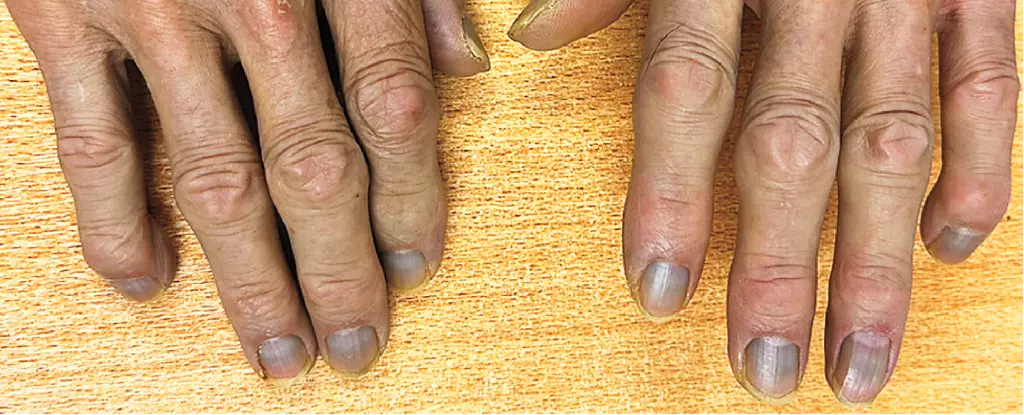Argyria, a rare condition characterized by a grayish or bluish discoloration of the skin, eyes, and nails, has become a point of intrigue in medical discussions, especially in relation to a recent case involving an 84-year-old man. This patient presented to a Hong Kong hospital not for cosmetic concerns but rather for complications stemming from a urinary flow obstruction. Additional examination unveiled a shocking revelation: he exhibited an unusually high concentration of silver in his bloodstream, a discovery that shed light on his long-standing ashen complexion, a hue that had persisted for five years prior to his hospital visit.
As medical professionals delved into this case, blood tests revealed that the man’s silver levels were over 40 times higher than those of an average individual. Such an overwhelming presence of silver in body tissues leads to the oxidation of the metal, forming granules that deposit beneath the skin’s surface, closely associated with sweat glands and blood vessels. This accumulation happens when silver ions react with UV light, catalyzing a chemical change that results in a marked change in pigmentation. Known colloquially as argyria, this condition had appeared more frequently among miners and artisans historically, who were directly exposed to the metal in their occupations. However, the rise of colloidal silver supplements has brought forth a modern dilemma in understanding the various pathways through which silver can infiltrate the body.
Despite a lack of scientific backing for their benefits, colloidal silver products are marketed around the globe as effective remedies purported to detoxify the body and bolster immunity. The U.S. Food and Drug Administration (FDA) has issued unequivocal warnings against the use of these supplements, stating that no conclusive evidence supports their efficacy in treating any medical condition. The irony lies in the widespread availability of such products, leading unsuspecting individuals to unknowingly ingest silver, potentially resulting in health complications like those seen in the Hong Kong patient.
Interestingly, the patient’s background as a waiter did not provide any apparent source of silver exposure, leading to speculation regarding how he acquired such a substantial quantity. Moreover, the fact that his neighbors showed no similar symptoms refutes the hypothesis of environmental contamination. This underscores the mystery surrounding the etiology of this condition; while natural sources of exposure exist, the true origin of silver accumulation in patients like him can be elusive, leaving medical professionals with more questions than answers.
While the cosmetic implications of argyria are profound, creating a stigma around the individuals who suffer from it, the actual health risks associated with silver buildup are remarkably benign in most cases. The main concern extends to certain medical treatments, where high silver concentrations may impede the absorption of specific antibiotics or medications such as thyroxine. Fortunately, such cases do not lead to systemic health failures nor immediate threats to the patients’ overall well-being.
One key takeaway from the case of the elderly man is the daunting reality that once silver accumulates in the body, its removal is an insurmountable challenge. There are currently no scientifically validated treatments available to expunge silver from the system, leaving affected individuals resigned to living with the physical manifestations of their condition. His medical team will undoubtedly monitor his silver levels over the long term, ensuring he remains cognizant of potential health implications while seeking methods to maintain a quality of life unaffected by his slate-gray complexion.
The case of the 84-year-old patient highlights the complexities of diagnosing and managing argyria, prompting a broader discussion about the safety of colloidal silver products and the need for increased awareness regarding potential sources of exposure. As our understanding of this condition expands, it becomes imperative for both healthcare providers and patients to advocate for informed choices regarding treatments that incorporate silver. Continued research and awareness will be crucial in preventing further occurrences of this enigmatic condition and ensuring safer health practices moving forward.


Leave a Reply